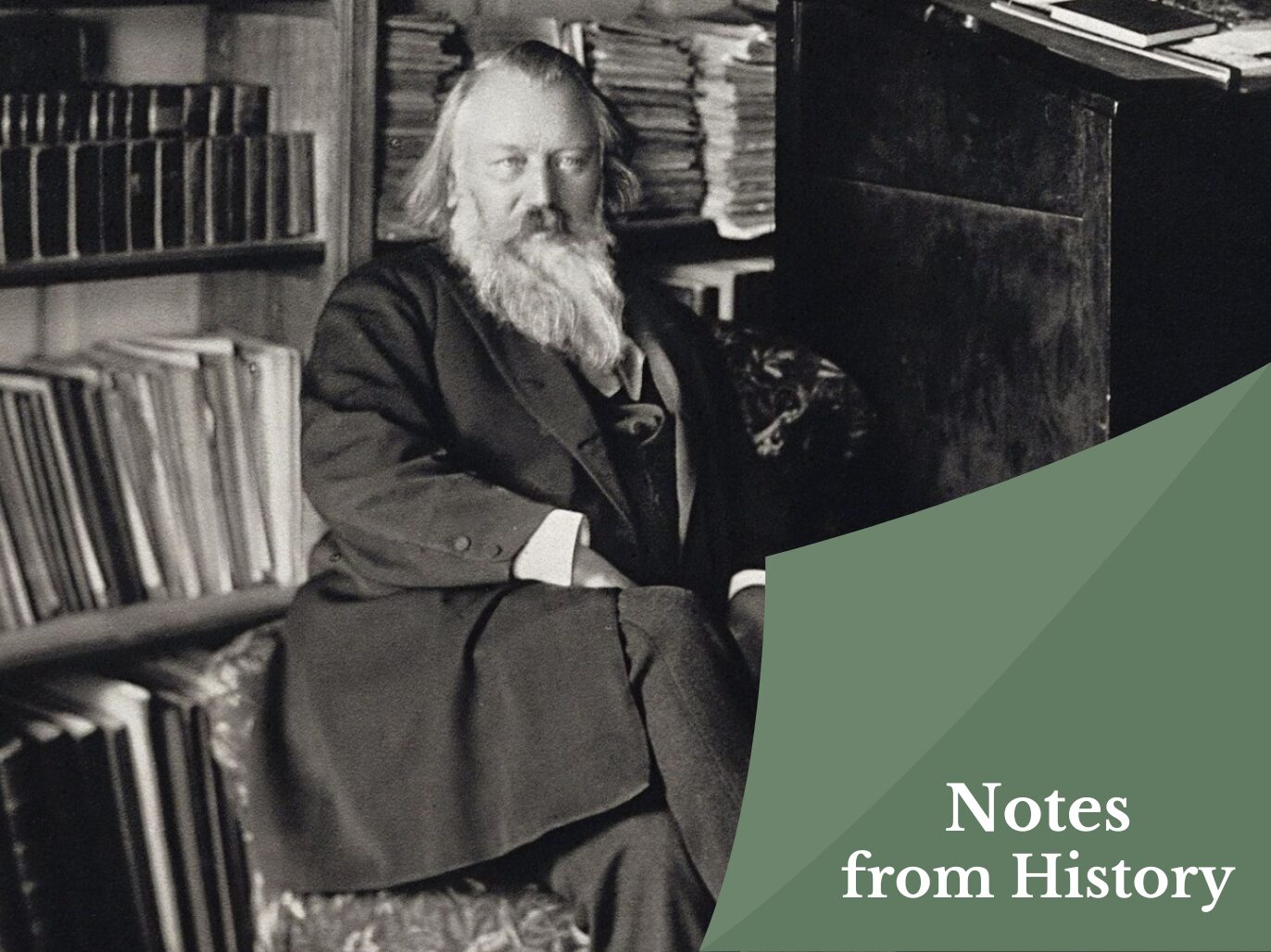Did Johannes Brahms ever think that one day curious admirers would be pouring through his personal letters looking for clues into his works? Brahms was famously lifelong friends with composers Clara and Robert Schumann, with whom he exchanged regularly through letters. These intimate exchanges unknowingly gave us a magical window into the conception of some of his finest classical pieces and in this case a more sympathetic lens to his less well-received First Piano Concerto.
View author's page
Reading time estimated : 4 min
Brahms’s First Piano Concerto: The masterpiece that almost never was
Johannes Brahms’s First Piano Concerto was born from years of doubt and revision, evolving from a piano sonata to a failed symphony before taking its final form. Encouraged by Robert Schumann’s high praise, Brahms wrestled with orchestration, sought harsh criticism from friends, and endured a disastrous premiere in 1859. Though initially dismissed, this concerto is now celebrated as one of Brahms’s greatest orchestral works, blending symphonic power with profound emotion.
A composer in doubt
Full of Christmas cheer, Brahms wrote to Clara Schumann in December 1857:
“I have been thinking about my Concerto lately. You cannot imagine the trouble it has given me. It is one botch from start to finish and bears the hallmark of amateurishness. I am trying to get rid of this and finish with the work for good.”
He was nowhere near done: his First Piano Concerto was still some 13 months away from its premiere, which took place in Hanover in January 1859.
By then, this “botch” of a concerto had been occupying Brahms’s thoughts for almost five years: almost as long, in fact, as he had been the protégé of Robert Schumann. The 20-year-old Brahms had arrived at the Schumanns’ house in 1853 and startled them with his talent. So much so, in fact, that in October that year, Robert Schumann published an article that praised Brahms in the most remarkable terms:
“[H]e has come; a young man over whose cradle Graces and Heroes have stood watch… Even outwardly he bore the marks announcing to us: “This is a chosen one.”… Should he direct his magic wand where the powers of the masses in chorus and orchestra may lend him their strength, we may look forward to even more wondrous glimpses of the secret world of spirits. May the highest genius strengthen him to this end.”
No pressure, then… As you might expect, these words weighed heavily on the young, humble composer’s head, and he did not find the transition to larger, symphonic-scale works as easy as Schumann evidently hoped.
From sonata to symphony to concerto
Which isn’t to say that he wasn’t rather good at it. It may have taken him a while, but his monumental First Piano Concerto is in fact the outcome of his first known attempt at writing an orchestral piece, according to Brahms scholar Michael Musgrave. It started life in 1854 as a sonata for two pianos—a logical next step, following on from his early piano sonatas—but later that year he began to orchestrate it. A symphony, it seems, was in the works.
He changed his mind in 1855: it was to be a concerto in three movements, with a scherzo as the second. Then that second movement became an adagio, a “tender portrait” of Clara Schumann. He kept changing his mind, and demanding criticism from his friends—the violinist Joseph Joachim most of all. “I am sending you the rondo once more,” Brahms wrote to him in April 1857. “And just like the last time, I beg for some really severe criticism.”
A disastrous premiere and delayed recognition
After its Hanover premiere on January 22, 1859—and after its second performance in Leipzig, on January 27—Brahms received severe criticism galore. The Piano Concerto met with a chilly reception and was ripped to pieces in the press. He wouldn’t write a symphony or concerto again for over a decade. Thankfully, his next such work—the First Symphony of 1876—went down far better.

